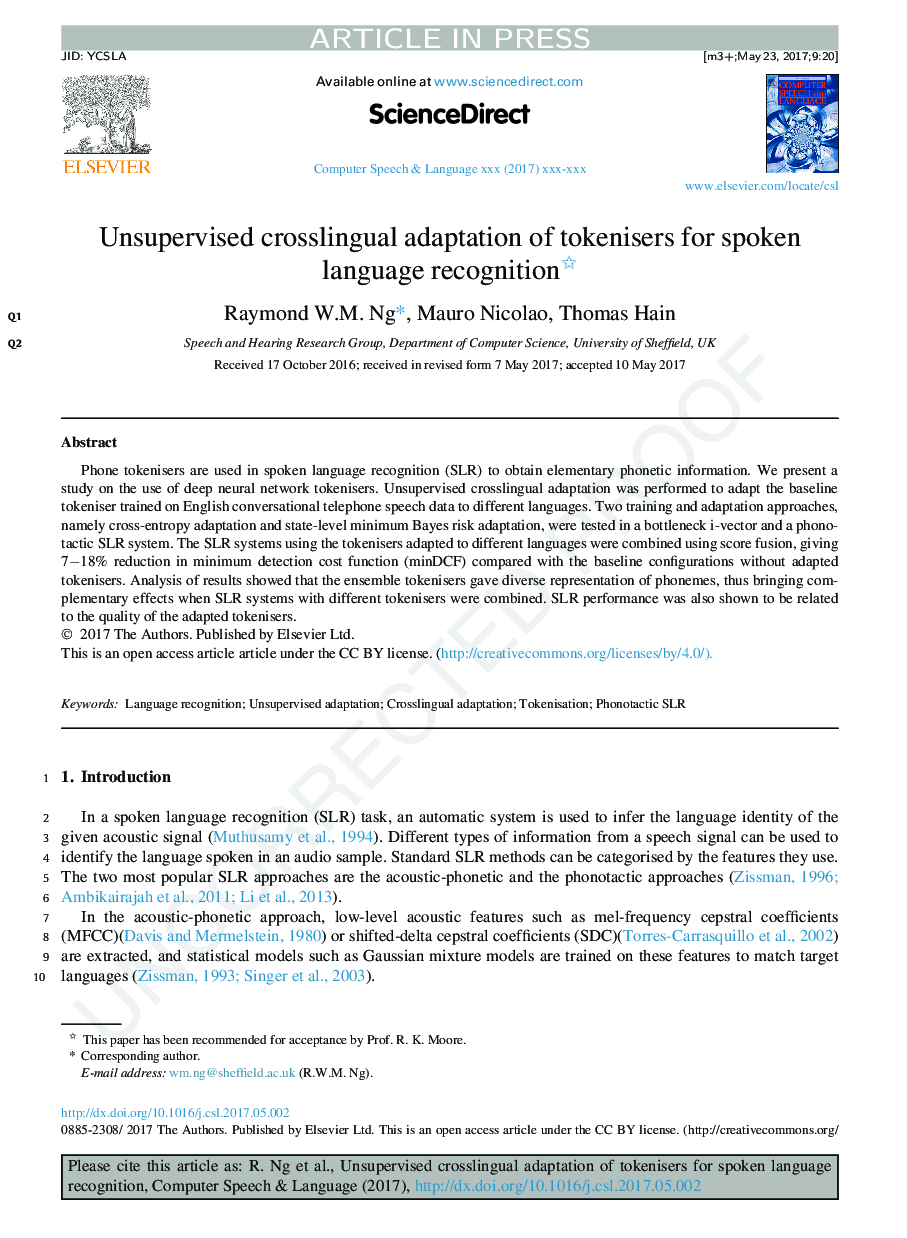| Article ID | Journal | Published Year | Pages | File Type |
|---|---|---|---|---|
| 4973717 | Computer Speech & Language | 2017 | 16 Pages |
Abstract
Phone tokenisers are used in spoken language recognition (SLR) to obtain elementary phonetic information. We present a study on the use of deep neural network tokenisers. Unsupervised crosslingual adaptation was performed to adapt the baseline tokeniser trained on English conversational telephone speech data to different languages. Two training and adaptation approaches, namely cross-entropy adaptation and state-level minimum Bayes risk adaptation, were tested in a bottleneck i-vector and a phonotactic SLR system. The SLR systems using the tokenisers adapted to different languages were combined using score fusion, giving 7-18% reduction in minimum detection cost function (minDCF) compared with the baseline configurations without adapted tokenisers. Analysis of results showed that the ensemble tokenisers gave diverse representation of phonemes, thus bringing complementary effects when SLR systems with different tokenisers were combined. SLR performance was also shown to be related to the quality of the adapted tokenisers.
Related Topics
Physical Sciences and Engineering
Computer Science
Signal Processing
Authors
Raymond W.M. Ng, Mauro Nicolao, Thomas Hain,
